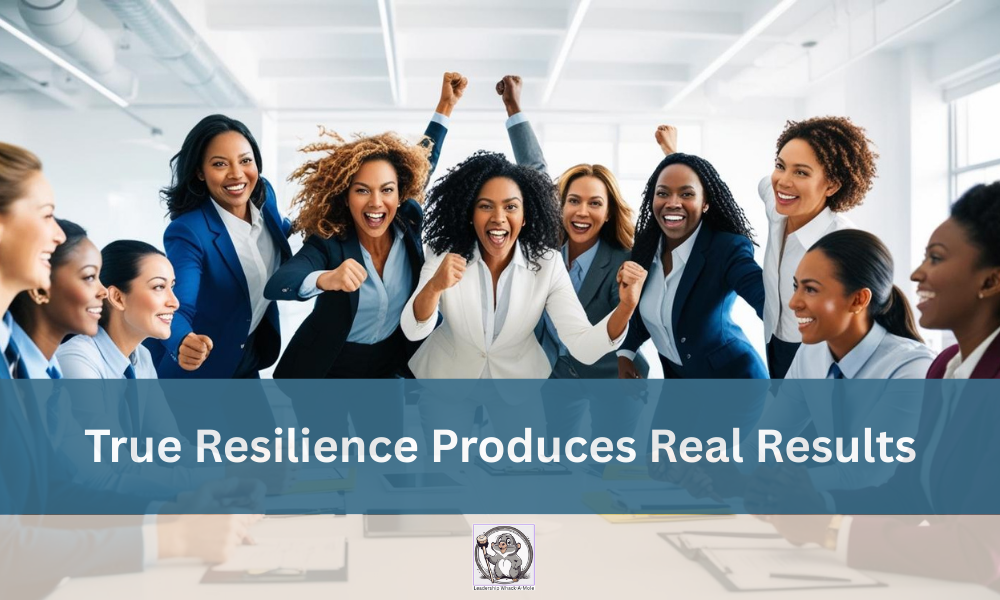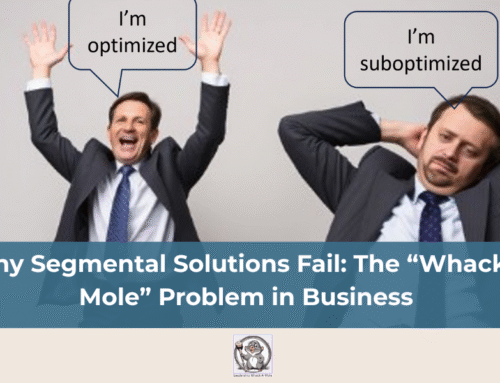
True Resilience Produces Real Results
By Ric Shriver
“Vanity of Vanities – All is Vanity. What does man gain by all the toil at which he toils under the sun!”
These are the words scribed by King Solomon in the opening verses of the book of Ecclesiastes in the Holy Bible. These words are on my mind this week as I continue to hear about the billions of dollars that have been spent by so many different organizations on so many endeavors, most of which originally espoused worthwhile pursuits with hopes of positively impacting a variety of different cultures, people, customers, and conditions that have challenged mankind since the beginning of time. One might argue that those leaders directing the expenditures for all the various causes might have seen their intentions as altruistic, heralded sacrifices of time and energy for causes they grew to believe were worth the continued focus and investments of valuable resources.
I ask the question “so what?” What difference have any of the thousands of well-funded causes made in both the public and private sector outcomes most of us can philosophically and ideologically support but have been absent in measurable results. Millions are still afflicted with chronic diseases, substance abuse still plagues millions throughout our culture, heart disease continues to take the lives of millions, and families continue to be torn apart for a multitude of psychological and economic reasons. What truly makes a difference?
I can recall finishing my senior year of high school, preparing for what I had hoped would be a successful collegiate athletic career in track and field with the ultimate desire of attaining international acclaim as a champion endurance athlete. I assumed that, in addition to denying myself the joys of loving and enjoyable relationships, true resilience would need to be a consistent and obvious characteristic of my life, demonstrated through increasingly harsh and painful investments of physical, psychological, and emotional exertion. What I felt I deserved was continued punishment and self-cleansing, which I faithfully secured through a daily devotion to intense, cardiovascular endurance activities.
A few weeks after my graduation from high school and the severing of a high school romance, I mounted my 10-speed bicycle and embarked on a ride from Winston-Salem to Boone, North Carolina. The route that I took was not a direct route, rather I chose to take a more “scenic” route that involved several thousand feet of climbing, first up to the Blue Ridge Parkway via Elkin, N.C., then along the parkway to the Bamboo Road exit at milepost 294. The final turn led to the end of my journey at a campground near the local Boone Air Strip. My high school running partner and soon to be college teammate had rented a small camping trailer at the campground, and while cramped, it served as a good place to end my journey. My friend still recalls today how, when he opened the door to the camper, I fell onto the floor, exhausted from the arduous ride.
At the age of 18 I thought I was invincible, strong enough to tackle the 121-mile journey on a bicycle, that by today’s standards was too heavy and improperly geared to be used for such a daunting journey. The confidence I had to embark on the journey that warm August morning was, in my young mind, rational. Through my high school years, I had become an accomplished long-distance runner. Just a few weeks before I had won the North Carolina State High School 2-mile championship and was one of only a few high school runners in the nation who had run several sub-3-hour marathons. So, in my own mind, I was physically invincible.
I completed the ride without injury. But to this day I can honestly say that the nearly 12 hours I spent on the road that hot August day were, and will be, the most grueling hours of physical endurance of my life. It was also the most reckless, ill-conceived adventure I have ever undertaken in my life. I often think about what I might have done, or how I would have responded to, my daughter informing me at the age of 18 that she would be embarking on such a reckless journey. I would have strongly objected. And if she was adamant about taking the trip, I would have driven behind her in my car for the entire journey.
What I experienced during the first two years of my collegiate athletic career was a continuation of super-human investments of time and energy in workouts intended to build a formidable sense of resilience and psychological fortitude with the intention of “muscling” through whatever the competition might present. What transpired over the first two years of my college athletic career was a complete breakdown of my physical, mental, and emotional health with increasingly disappointing competitive outcomes. In fact, by the end of my sophomore year of college I was suffering from a lower back injury that, for several months, ended my ability to continue running with a subsequent loss of the athletic scholarship that had opened the door for my college education. Thousands of hours, thousands of miles, and thousands of dollars spent training harder and harder with disastrous results.
Unfortunately, throughout my professional career I have experienced similar “reckless” expenditures of time and energy, working on projects and initiatives that were financially, physically, mentally, and emotionally exhausting with little or no positive impact on the cultures, customers, or clients being served. These expenditures were typically the products of obsessive-compulsive leaders who felt that they were developing true resilience for the members of their teams, encouraging self-sacrifice and tireless efforts focused on unparallelled activity and volumes of tangible outcomes that provided little or no value to anyone other than to the leader driven by deep-seated emotional insecurities.
The experiences described in the preceding paragraphs beg the question “so what?” What truly constitutes resilience, and most importantly, meaningful, fruitful, and positively impactful results. The Webster’s Dictionary definition of resilience is the capacity to withstand or to recover quickly from difficulties; the ability of a substance or object to spring back into shape, or elasticity. Two words stand out in the preceding definition – “recover” and “elasticity”. This implies that, while noteworthy efforts may be exerted towards a measurable goal or outcome, there is also a focus on understanding when recovery and elasticity, or flexibility, are critical. In Leadership Whack-A-Mole: Actionable Strategies for Leadership Challenges, I address the optimal performance of a radio transmitter. Maximizing power rarely, if ever, results in the best signal strength and clear reception. Atmospheric conditions, geographic location, frequency being used, and antenna length are factors that call on the radio operator to “moderate” the wattage being used based on the unique combination of these and potentially other variables. Simply put, as intelligent human beings, we must “adapt” to the conditions and circumstances we are experiencing, then pursue realistic, well-balanced strategies for success. As a college distance runner, I would have benefited from coaching that recognized the diminishing results in competition, observable fatigue, and the growing incidents of injury to the members of the team. My coaches always assumed we just needed to put in more mileage and exhausting interval workouts on the track, all of which further diminished our performance. As a human resources and organizational development leader, I would have benefited from senior leaders who called upon us to facilitate policies, initiatives, and development opportunities that positively impacted our cultures and human performance – that was rarely the case. Again, I experienced leaders who stood behind “more is better!”
And so I ask, “so what?”



